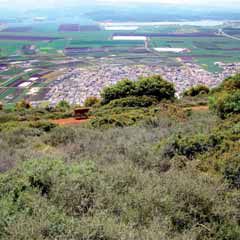
Lower Galilee descent
The locale of our recent Esra hike was the Lower Galilee, in the vicinity of Mt. Atzmon. Unlike most of the Galilee, this area has a majority (60%) of Jews, with the rest of the population consisting of Arabs, Kurds, Circassians and Beduin. It is a beautiful area with verdant views of the Jezreel and Kishon valleys and undulating hills.
Thousands of years ago, Israel was comprised of Judea, Samaria and the Galilee; the most northern and largest region was the Galilee. From that time on, the local population was mixed between Jews, Christians (Jesus did some of his most significant wonders there), Arabs, Crusaders, more Jews (after the Inquisition), Ottoman Turks, the British and yet more Jews and Muslims (since the late 19th century). In ancient times, the Galilee's large towns of Safed (Tzvat) and Tiberias were two of Israel's holiest cities. In the early 20th century the pioneering agricultural efforts which built up the country were made in the nearby Jezreel Valley, Israel's largest.
Our hike started from Kawkab el Hija, an Israeli Arab town that dates back to Crusader times. Kawkab ("star" in Arabic) el Hija is one of the "Al-Hija" villages named after the Kurdish warrior Hussam al-Din Abu al-Hija, who was commander of the Kurdish forces that took part in Salah al-Din's (Saladin) conquest of the Crusader Kingdom from 1187 to 1193. It is said that Abu al-Hija, known as "the Daring" for his bravery, commanded the garrison of Acre at the time of Richard the Lionheart's siege of the city. Saladin rewarded Abu al-Hija for his fortitude with the land on which Kawkab el Hija and other villages were founded.
In modern times, Kawkab el Hija had an enterprising mayor who provided excellent infrastructure for his town and had good relations with nearby Jewish communities. The main industry of the local Arabs is olive oil, for which the region has been famous for thousands of years. Gidi, our guide, told us that Kawkab el Hija has a fierce rivalry with a nearby Israeli Arab town, Rumana, and that in 2006 the olive oil from both towns scored highly in an international competition.
We hiked down the hill from Kawkab el Hija, first passing a sculpture garden with works by Israeli and Arab sculptors. We made our way through the Beit Netofa valley towards Rumana and gradually began the climb up Mt. Atzmon, which at 1,000 feet is the highest mountain in the Lower Galilee. After reaching the top of Mt. Atzmon and taking advantage of the fine view and the perfect weather to have a break, we descended into another valley before ascending once more towards the ancient city of Yodfat.
Yodfat was the birthplace of the mother of Amon, king of Judah (Kings 2, 21:21-22) "He [Amon] walked in all the ways of his father; he worshipped the idols his father had worshipped and bowed down to them. He forsook the Lord, the God of his fathers and did not walk in the way of the Lord." Not long after that, in 586 BCE, Judah fell to the Babylonians, who were God's instrument to punish the idol-worshipping Jews. In the time of the Second Temple, the city was fortified by Joseph Ben Matityahu, the commander of the rebellion in Galilee, who held out heroically for 40 days. This was in the beginning of the Jewish Revolt against the Romans, 66-73 CE. The town's ruins reveal remains of buildings, caves, pools and pits from the Roman era.
The longlasting Roman siege of the town was a result of its double wall fortifications. No gate was built into the double wall, the better to keep invaders out. Yodfat was the first of three fortified garrison towns to fall; the others were Gamla and Masada. Like those in Masada, the defenders had made a suicide pact in the event of defeat. On the last day of the battle, Ben Matityahu and 40 of the surviving defenders fled to a cave where they planned to commit suicide. But Ben Matityahu fixed the lots so that his name would come out last. After the others killed themselves he surrendered to the Romans. At the battle of Gamla, Ben Matityahu became a prisoner, but by the time of the epic battle at Masada, he had gone completely over to the Romans and had a new name, Flavius Josephus.
Josephus volunteered to write the history of the Great Revolt and General Vespasian, who later became emperor, agreed. So it was the turncoat Josephus who provided the Romans and posterity with a first-hand account of the fall of Jerusalem in 70 CE. Of course, Josephus was writing for Vespasian, so his scholarship was thought to be biased in recent centuries.
Following the end of the war, Josephus was taken to Rome, where he wrote his history, The Jewish War. His second major work, Jewish Antiquities, covered the time of Alexander the Great to the destruction of the Second Temple in 70 CE. Since Josephus relied heavily on hearsay and legend, historians had another reason to question the truthfulness of his writings.
Norma Franklin, one of the hikers who happens to be an archeologist, updated the group on the validity of Josephus' works. Recent excavations have led to finds which are similar to what Josephus depicted. So, instead of his doubtful legitimacy as a historian, Josephus has gained a heightened stature in the eyes of contemporary scholars.
[See www.jewishvirtuallibrary.org for more information on Yodfat and Flavius Josephus]
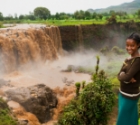 A “Virtual” tour of Ethiopia
A “Virtual” tour of Ethiopia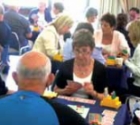 ESRA Herzliya’s Annual Bridge Morning
ESRA Herzliya’s Annual Bridge Morning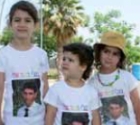 Walking for Benji
Walking for Benji A new website in English - on Volunteering - Launched in Israel
A new website in English - on Volunteering - Launched in Israel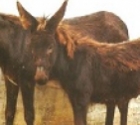 Help Needed for Abused Horses and Donkeys
Help Needed for Abused Horses and Donkeys Heather's Heseg
Heather's Heseg Steve Kramer
Steve Kramer